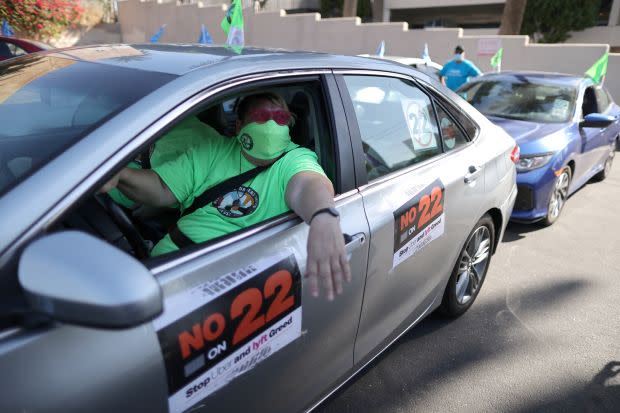Can Uber lure back its US drivers without making them full-time employees?

Uber is seeking more workers who will work full time, a move that could change the definition of gig work.
The company is “targeting” drivers that it thinks will most likely contribute more hours, those “who will drive 20, 30, 40 hours a week,” Uber CEO Dara Khosrowshahi said on a JPMorgan conference call with investors yesterday (May 25).
Khosrowshahi didn’t specify exactly how Uber will target drivers but it could include cash incentives, as the company announced last month a $250 million driver “stimulus” aimed at getting drivers back on the road by boosting their earnings. Uber did not respond for a request for more details.
As lockdowns end and people return to bars and restaurants, there’s been longer wait times than usual for hailing an Uber or Lyft. Drivers have been slow to return to the platforms due in part to concerns about health and safety.
Most Uber drivers work part time on the ride-hailing platform, but working longer hours would make the job less of a part-time gig since there’s less flexibility. By trying to lure back drivers, Uber risks turning them into full-time employees, which could force Uber to pay into benefits like unemployment insurance and health insurance.
Though most gig drivers don’t drive full-time for Uber and Lyft, the gig platforms have reportedly depended on full-time drivers for years. A study last July from UC Berkeley’s Institute for Research on Labor and Employment found that nearly one-third of drivers provide more than half of all Uber and Lyft trips in Seattle.
Uber drivers do not fit neatly into the box of a traditional employee or an independent worker. But when they work regular 40-hour weeks, they seem less like the new class of employee that the future of work promises and more like workers with a regular job.
The debate on gig workers rights continues
Uber continues to face a slew of regulatory concerns over how it classifies its drivers both in the US and globally. In November, Uber and other gig platforms won an exemption from California’s labor law, which would have required the companies to re-classify their workers as employees. California voters approved Proposition 22, which frees the gig companies from the state measure but requires them to offer a limited benefits package to their workers in the state. Recently, Reuters reported the US labor department plans to have “conversations” with the gig companies about their employment model.
If Uber had to reclassify drivers as employees, that could pose an existential threat to their business model.
On the conference call, Khosrowshahi said most drivers are looking to come back onto the platform when they are fully vaccinated. There’s been a slew of anecdotes that drivers are looking to switch to a different job, which may be true for some, but not for all.
Khosrowshahi said the driver supply problem is not showing up in places like the UK or France because driving for Uber there is “more of a vocation for drivers” versus in the United States. In those places though, drivers have also been fighting for more workers’ rights—and have successfully won them. In February, the UK Supreme Court ruled Uber must treat drivers as workers, not as self-employed contractors. If more drivers in the US were to drive full-time, that could potentially complicate the worker classification debate.
Sign up for the Quartz Daily Brief, our free daily newsletter with the world’s most important and interesting news.
More stories from Quartz:
The death counters: How journalists in Narendra Modi’s home state exposed India’s Covid-19 deception
